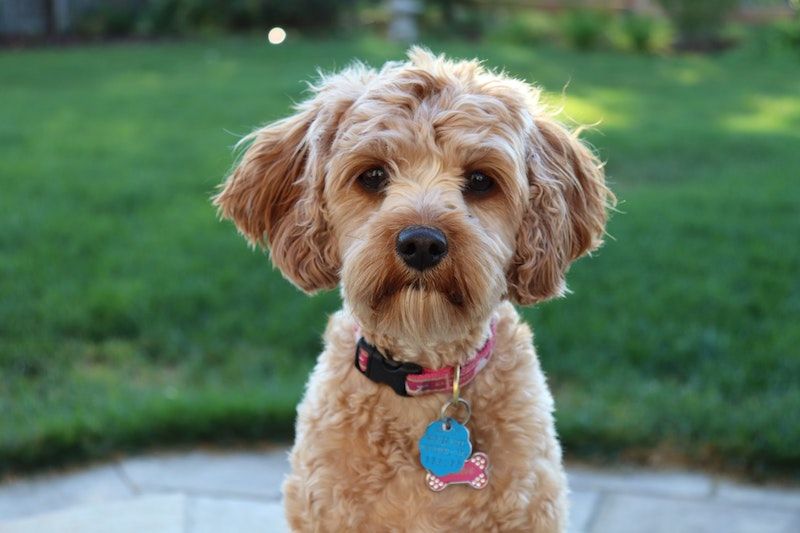There are different reasons you may want to rename your dog; but, can you change a dog’s name?
Renaming a dog does not have to be a difficult task, yet many are clueless about how to go about it.
Perhaps you adopted the dog and do not like the name given by the owner.
It could also be that you had a change of mind and found a better-suited name than what you originally gave.
Whatever the reason, changing a dog’s name is possible. It does need some effort from you.
It is one thing to teach a dog a particular name. Getting him accustomed to a new name will require some training and repetitions.
Unlike humans, dogs only hold on to what they have been taught. Once they are used to responding to a particular name, any alteration would leave your dog confused and even uninterested.
There are steps you should take to succeed in giving your dog a new name.
In the beginning, you may face some challenges. However, with consistency and the right methods, your dog will be responding to his new name in no time.
In this article, you will get pro tips on how you can change a dog’s name.
We will also look into the pros and cons of changing a dog’s name, and the valid reasons that push pet owners to change their dog’s names.
Can You Change a Dog’s Name?
The simple answer to the question would be: yes, you can change a dog’s name. However, that you can doesn’t mean you should.
There are benefits and downsides to changing your dog’s name.
Take note of these before you decide whether or not your dog should get a new name.
Pros and Cons
Advantages of renaming a dog
- You get to decide what your dog will answer, not rely on what the shelter or breeder named them.
- It creates a bond between you and your pet. A name from you is an unofficial stamp of parenthood.
- If the dog suffered abuse in the past, a name change is therapeutic for the dog.
Disadvantages of renaming a dog
- If you had given them a name that they got used to, your dog may get confused if you bring up a new name.
- It can serve as a deterrent to training. All training processes hinge on your dog being able to recognize his name. When you change his name, you’d have to go back to scratch.
In summary, while you can change your dog’s name, it shouldn’t be a habit. It is best to look for a name at puppyhood and keep it that way.
When is it Okay to Change Your Dog’s Name?
According to New York Dog Trainer Renee Praynee,
“dogs don’t have a concept of identity the way we do.
It might be confusing if you change a dog’s name regularly, but everyone I know calls their dogs several different nicknames.
You can always add on; you just want to have some consistency. It has to be something you consistently call them.”
From this statement, a few things are clear. While some may be concerned about a name change, dogs don’t give much thought to it.
A name serves as a signal for them to recognize, not a label they identify with.
However, a frequent name change may do more harm than good.
The best reason to change a dog’s name is when the name triggers negative emotions in the dog.
Many dogs at shelters were abused and harshly treated by their past owners. Their old name may make them touchy.
The same applies to a dog who went through a tragedy. When a dog needs total healing and a new way of living, a name change is advisable.
If your dog no longer responds to his name even after training, a new name with novel forms of rewards may be your best bet.
When you find a dog without a collar that you may want to take as your own, you could also give him a name.
For this last point, ensure that you dot and cross every i’s and t’s before taking in a stray dog.
How to Rename a Dog: Pro Tips to Change Your Dog’s Name
How do you go about renaming a dog? Here are 5 pro tips to make it easy for you.
1. Shorter is better
Dogs learn faster when the commands and orders are in short forms. ‘No’, ‘Sit’, ‘Roll’, are common examples.
They find it hard to pick up a word with many letters, so you should avoid that while raising a dog.
This tip also applies when giving them a name.
Rather than calling your female dog Anastasia, why not shorten it to Ana? It makes the work easier for you and your pet.
2. Avoid names that sound negative
A good rule of thumb to apply when naming your dog is to avoid names that sound like ‘no’.
Your dog should associate ‘no’ with a refusal, or a rebuke. If the new name sounds like ‘no’, it could come out as a rebuke.
3. Find a name you like
This sounds obvious, but it does mean you should name your dog with caution.
Changing your mind constantly on your dog’s name is not a good pet parenting attitude.
Take your time to find a suitable name, and stick to it.
4. Be wary of popular names
While you wouldn’t want to give your dog a name that sounds prehistoric, avoid names that are too common.
Not only is this uncreative, but it may also lead to confusion when you meet other dogs with the same name.
Do your proper research and find some unique names.
You May Like:
- Sassy, Cute, Hipster, and Badass Girl Dog Names
- Male and Female Husky Dog Names
- Game Of Thrones Dog Names For Fandoms
5. Have fun!
Renaming a dog is serious business, but it isn’t a crime to have fun while at it.
As we’ll soon see, a happy atmosphere helps your dog learn his new name faster.
Do not make the naming process look like drudgery.
How to Teach Your Dog Their New Name

Once you’ve decided on a name, your next assignment is to teach your dog a new name.
Once your dog recognizes his name, it is easier to keep him in check.
Recall and Obedience training works best when your dog knows his name.
Here are some practical steps to teach your dog their new name:
1. Practice
Teaching your dog anything requires practice. It is no different when you want him to get used to a new name.
Make it consistent and soon you’ll get results. Do not be sporadic or careless about this.
2. Call the new name with a happy tone
Generally, dogs respond positively to a happy tone (as do humans).
To get your dog to associate his new name with a positive feeling, call it with enthusiasm.
Use the same tone you employ when praising them for achieving something.
3. The first few times, use both the old and new name
This makes it easier for your dog to transit from the old to the new. When you start, call them with their old and new name.
You can either call each name at intervals or fuse them. After some days, use the old name less often until you stop altogether.
4. Use treats
As you test out the new name at random, have some treats that you give as a reward when they respond to the name.
Some good treats are biscuits, cheese, and kibble.
5. Call the name when the dog is distracted
While the dog is chewing a bone or digging the yard, test the new name by calling it.
Once your dog learns to stop whatever he’s doing at the sound of the name, it means they recognize it.
You can also call the name alongside the command. An example is ‘Cleo, sit’.
6. Do not use the name continually
While repetition and practice are vital, do not use the name too often.
Doing so would make your dog associate the name as an ordinary sound and ignore it.
Only use the name when you need to, like during training or playtime.
7. Don’t use the name when angry with your dog
Your dog must get pleasant feelings from the new name, especially if they were abused and need a fresh start with a fresh name.
There are other ways to get your dog’s attention when you want to correct them.
FAQs
Is it wrong to change a dog’s name?
There are moments when you need to change a dog’s name, and it is not wrong to, especially if the dog isn’t attached to the name.
In some cases, you should change the name. However, you shouldn’t make this a habit.
Your dog needs one permanent, not a hundred temporary ones they may end up not recognizing.
Can you change a dog’s name after you buy it?
Most shelters and breeders give their puppies and dogs names to identify them. You may not be thrilled with these names, or you may be unsure of their origin. If so, then you can change the name to something you prefer.
Do dogs remember their old names?
Unlike humans, dogs do not place many identities to their names. This makes it easy for you to change it. Once you get them accustomed to their new names, they will not need the old ones.
How long does it take for a dog to learn its new name?
With enough fun and pleasant training, it doesn’t take long for a dog to learn its new name. Within two or three days, the dog may start to show recognition. In two weeks, they should learn the new name.
How late can you change a dog’s name?
While there is no time expiration in changing a dog’s name, the best time to do this is when your dog is still a puppy.
If you adopted a full-grown dog, it will take longer to teach him a new name.
Aged dogs may find it difficult to adapt to a different name, so you should leave a senior dog’s name as it is.
Wrap Up on Renaming a Dog
A dog’s name is the word he should respond to and the way you identify him.
The name should be one that you and your dog are comfortable with.
If you want to change your dog’s name, pick one that would be easy for your dog to recognize.
You may decide to put your dog’s name on the tag, but it isn’t compulsory.
There are some downsides to displaying the name, so it is up to you to choose if you want to go down this path.







